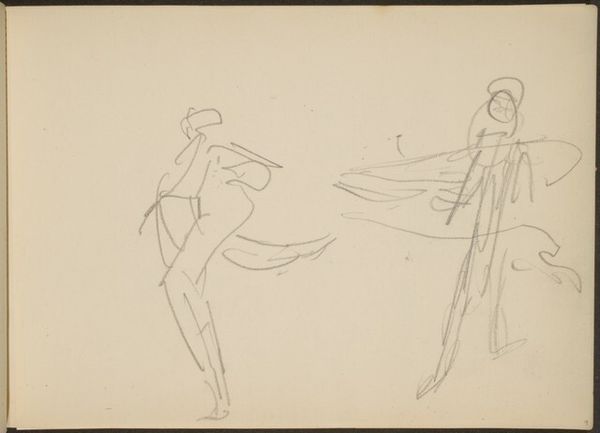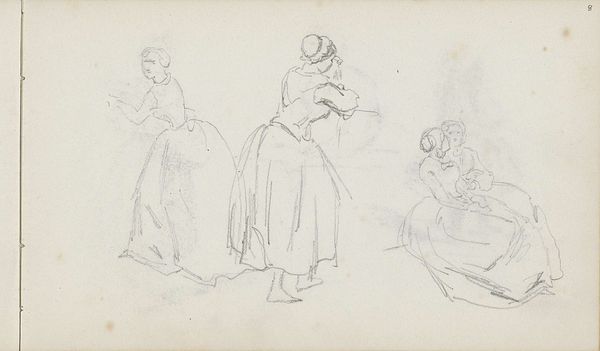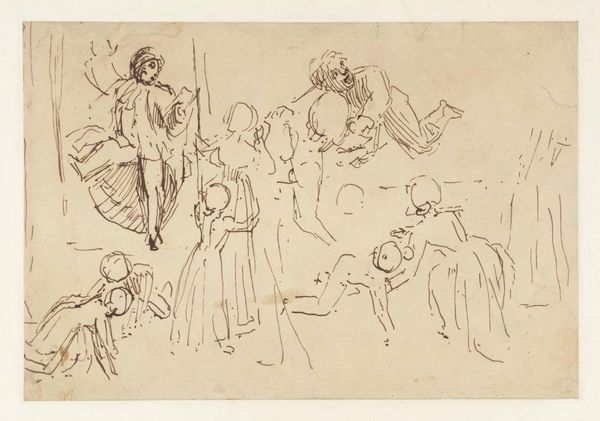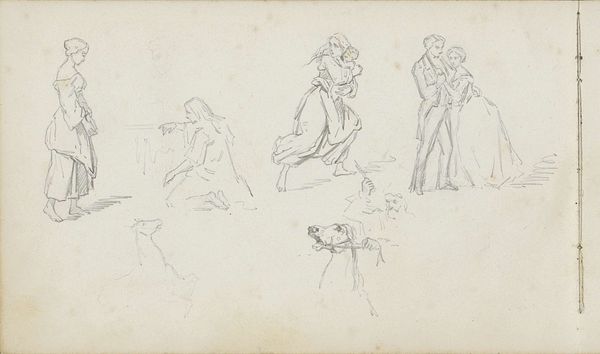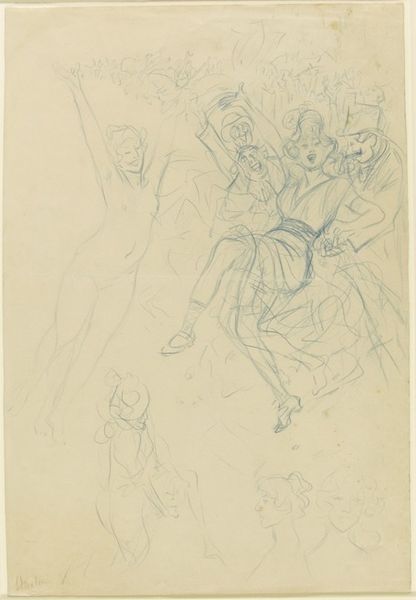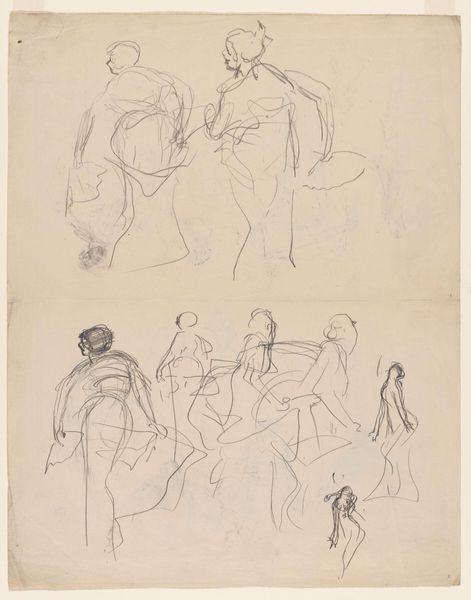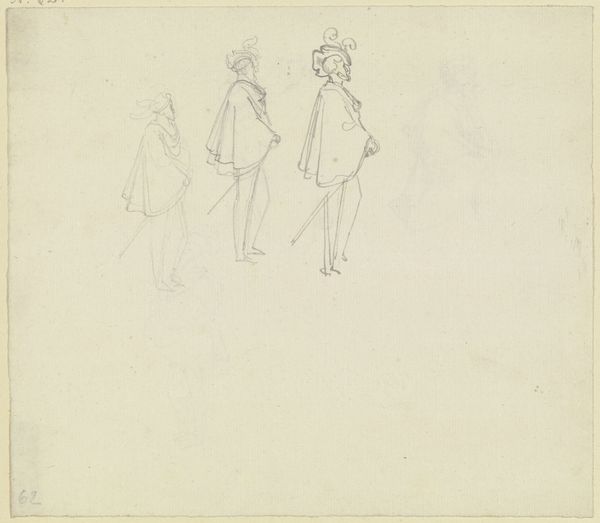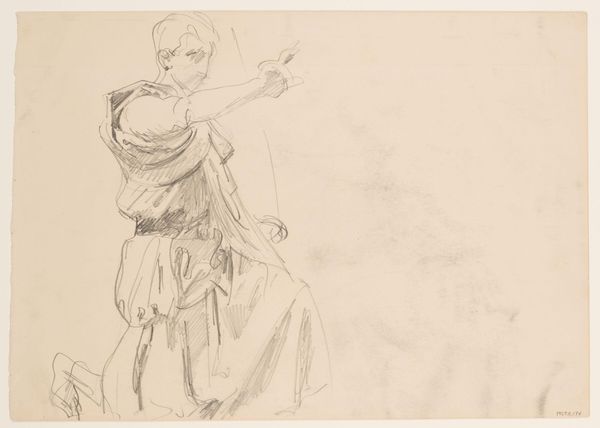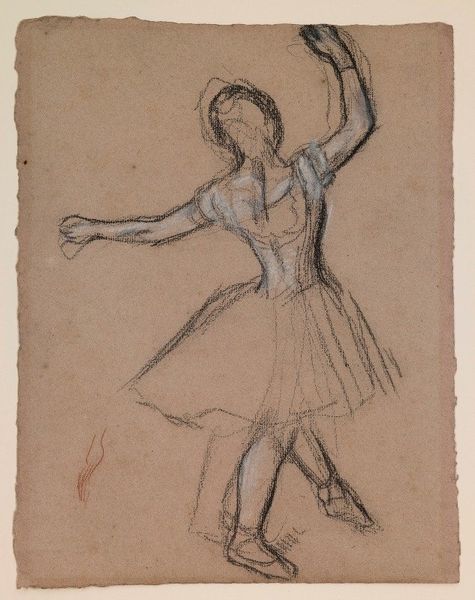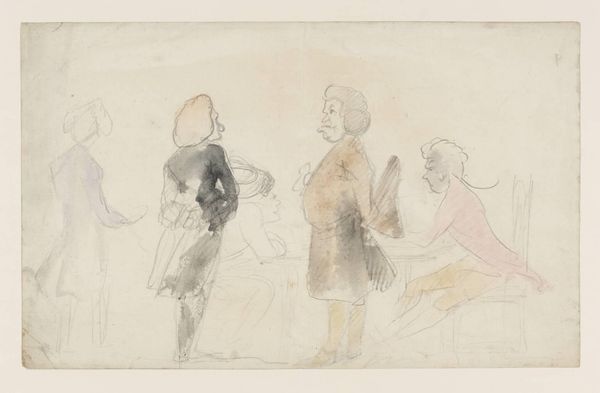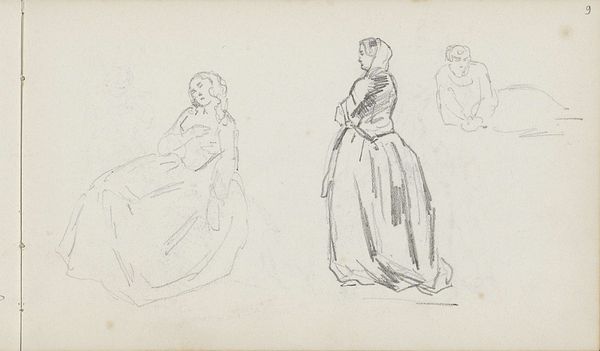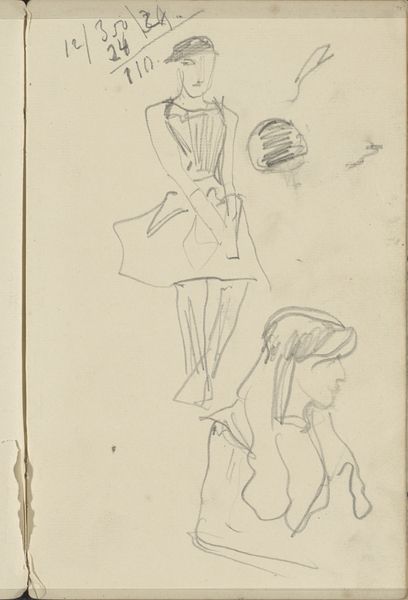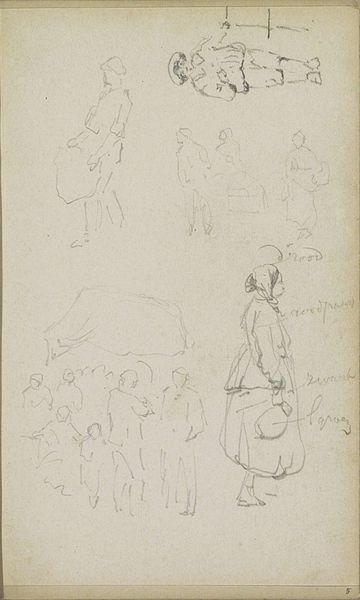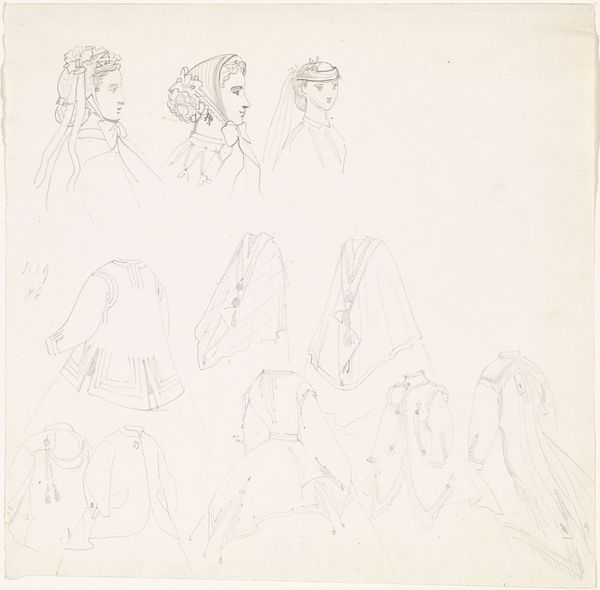
drawing, pencil
#
drawing
#
impressionism
#
landscape
#
figuration
#
pencil
#
genre-painting
Copyright: Public Domain: Artvee
Curator: Edgar Degas’ pencil drawing, "Ballet Dancers Rehearsing," made around 1877, captures a fleeting moment of practice. It's a genre scene, really. Editor: My immediate feeling is of impermanence. These light strokes suggest something about to vanish, a secret glimpse into this world of ephemeral movement, fraught with social significance. Curator: There is that ethereal quality in Degas' mark-making, isn’t there? He layers strokes, and this adds dimensionality, depth, movement—and a suggestion of unseen effort. Note how the pencil mimics the dancers’ repetitive, careful practice. Each arabesque repeated countless times to approach perfection. Editor: Yes, that sense of repeated action, of labor hidden beneath the veneer of grace. Think about the implications; the lives of these women, their bodies disciplined to create what society deems "artful." Degas renders visible the almost unbearable rigor hidden within. Curator: Do you think Degas’ choice to sketch reflects on how female bodies, in general, were perceived? Editor: Undeniably. The unfinished nature feels critical. While showing the dancers in this almost academic pose, he doesn’t “finish” them. This is perhaps a signal of their role in 19th-century Parisian society; always becoming, and never being whole unto themselves. The symbolism in the pencil, itself, alludes to work; an important commentary when you consider the fact women at the time were expected to contribute labor and beauty. Curator: It speaks to a transient beauty that exists at the limits of human performance. Each image, although sketched with speed and lightness, is incredibly poised, elegant even. Consider the audience, themselves arranged in the bottom left corner: also poised, in place and gesture. Editor: Absolutely, there's an interconnected system being constructed in that space. However, their gestures seem weary. Again, here we find something that points to gender and race: whose labor is worthy, whose goes unseen, who gets to watch, and who dances for an audience, eternally trapped in this cyclical moment. Curator: A cyclical moment—a fitting summary, thank you. I think together, we found ways of thinking beyond genre and into history through this intimate sketch by Degas. Editor: Indeed. It’s important to always question who’s in the spotlight, and whose movements exist only as sketches, or shadows.
Comments
No comments
Be the first to comment and join the conversation on the ultimate creative platform.
